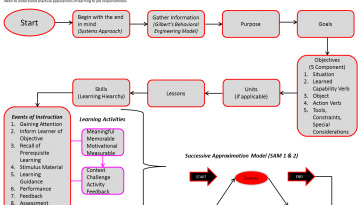Command and control In a business environment in which change is the only constant, command and control management style has been criticized as being too hierarchical, too mechanistic, and too cumbersome for making timely decisions about how to best execute work. At its worst, it can also be authoritative, dictatorial, and dehumanizing. Critics of command… Read More
Grant’s Strategy to End the Civil War: A Case Study in Organizational Alignment
We can use history as a guide in understanding how to align organizations and drive change. The Civil War period, for instance, provides many examples of how leaders mobilized differently in order to achieve results. Take for example the case of General Ulysses S. Grant. After three bloody years, public support for the Civil War… Read More
Functional Dysfunction: Personality issue or a design issue?
Employee frustrations and conflicts about getting work done are often not the result of personal differences among the people in an organization, but rather the result of misaligned, undefined or incompatible relationships between the units of the organization and leaders who are not well suited for the teams they are leading. When designing an organization,… Read More
Finish What You Start!
Mature organizations adopt a holistic approach to organization design by focusing on the entire interconnected system. This means aligning strategy with work processes. Strategy defines what will provide a competitive advantage for the organization; Organization Design/Alignment is aligning strategy, structure, work processes, information, culture, people, rewards, and metrics; Implementation is choosing where to utilize resources,… Read More
Trust but Verify
When working on an organization design project, the designer can approach the design intuitively or systematically. An intuitive approach means basing decisions entirely off of gut feelings or instincts. On the other hand, a systematic approach begins with studying the current state of the organization. Studying the current state of an organization includes gathering information,… Read More
Design Thinking
Solid design thinking leads to adaptable, flexible, and responsive organizations. So what does it mean to think like a designer? It includes having empathy for users, creating design models, prototyping, tolerating failure, and exhibiting thoughtful restraint. Empathy for users: uncovering what users want and need and providing insight into what user aspirations, concerns, desires, engagement,… Read More
Methodology for Instructional Designers
As an instructional designer, it is prudent to have a methodology in place to design effective instruction. Recently, I reviewed several design resources which have helped to shape the methodology that I employ as a designer: Leaving ADDIE for SAM: An Agile Model for Developing the Best Learning Experiences by Michael Allen Principles of Instructional… Read More
Architectural Design, City Planning, and Instructional Design Connections
As an instructional designer, it is only necessary and proper that one reads about andragogy, multiple intelligence theory, and instructional strategies for engaging different learning styles. It is also incumbent upon an instructional designer to become skilled at writing course goals and objectives, presenting course content, and facilitating the learning process. While knowledge and application… Read More
A Recipe for Effective and Engaging Instruction
Growing up in an Italian American family, one of the things that I learned from my forbears was how to prepare a pasta sauce. To cook a good sauce, there are some fundamental ingredients that one must incorporate in order to make it appetizing: olive oil, garlic, tomatoes, basil, oregano, salt, and pepper. There is,… Read More
You Cannot Be Anything You Want, Even If You Work Hard Enough…
From 2007 to 2012, I dedicated five years of my life to becoming an effective social studies instructor. All through the education coursework, the classroom observations, the student teaching, the substitute teaching assignments, and the full time teaching and coaching positions, I observed on numerous occasions administrators, teachers, coaches, and other practitioners of secondary education… Read More








